Duchenne’s Myodystrophy. This phrase is reminiscent of some mysterious spell. Actually it stands for rare disease, and thousands of boys with the diagnosis, which often do not even know themselves doctors.
Before the boys (they suffer from Duchenne’s myodystrophy) barely live to be 20, now projected lifespan has increased to 35 years. But it is in Europe. In Russia, things are still quite tense – there are problems with diagnosis and therapy.
To reverse the situation of trying members of the charity Fund “Maimi” that help children with Duchenne’s myodystrophy and their families.
The big problem with diagnosis
Duchenne’s myodystrophy – orphan (rare) genetic disorder, most often inherited through the maternal line, says the doctor-neurologist, physical therapist and medical consultant of the Fund”, Mimio” Marina Komarova.
“Sometimes there are cases that the disease no one had manifested, and was first diagnosed in a child. This situation is called de novo, accounting for 30% of cases. With Duchenne’s myodystrophy only sick boys. The whole country should have about 2.5-3 thousand children. For example, in a fairly large registry of our Foundation consists of about 300 families, and it should be in the region of three thousand. Where are the rest – the big question,” says the doctor.
The disease itself is associated with a mutation in a gene called dystrophin, which is located in skeletal muscles and neural tissue, she explains. The disease manifests increasing muscle weakness and neurological disorders in 35% of cases.
The first signs of Duchenne muscular dystrophy occur when the child must learn to walk and run after a year and a half. Usually the first thing parents notice is the child is not as active as their peers. It is more slow, cautious, he may have a strange gait. To 10-11 child can sit in a wheelchair, and in the 15-16 years will require respiratory support.
In the list of rare diseases Duchenne’s myodystrophy got in 2014. This special situation of children with this diagnosis in Russia and limited to, the Director continues the charitable programs of Fund “Mimio” Elena shepherd. As with all orphan diseases, myodystrophy Duchenne has a big problem with the diagnosis. From the moment parents suspect that something is wrong in the child to diagnosis can take several years.
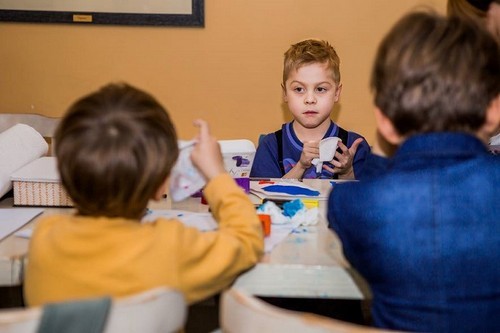
There are cases when the child first diagnosed in 10-12 years, says Marina Komarova. This means that before any maintenance therapy he had received. Although in order to detect the Duchenne’s myodystrophy, no need to be Dr. House.
Manifestations of the disease is quite typical. On the one hand, a delay of motor development and muscle weakness in the legs. On the other hand, it is characteristic of biochemical analysis of blood – a sharp increase in liver enzymes dozens of times.
“Usually the boy accidentally do biochemical analysis of blood and identify the very CPK (creatine kinase, an enzyme contained in the cells of the heart muscle, skeletal muscle, brain, thyroid, lungs) and LDH (lactate dehydrogenase, lactate – enzyme involved in the oxidation of glucose and formation of lactic acid). The child is diagnosed with “hepatitis of unknown etiology, and up to five-six years it can heal from unexplained hepatitis. Although other forms of hepatitis and not at all,” says the doctor.
Frequently Duchenne’s myodystrophy not been confirmed. The diagnosis is made clinically, but for the precise delivery of required genetic testing. However, due to the lack of professionals (especially in regions) DNA test is not done. Although now in Medical genetic research center (mgnts) test for this disease is free of charge. But not everyone has the financial ability to come to the capital.
Can’t be cured, but you can help
There is no cure for muscular dystrophy Duchenne now is not the time, but can greatly affect the duration and quality of life, experts say.
There are support methods – hormonal and biological therapy, respiratory support, physical support, stretching, breathing exercises, selection of the correct equipment, strollers, says Marina Komarova. The latter is very important and greatly affects quality of life.

“If all this does not hold, then the child forms the disfiguring contractures – it is hard to care, hard to put in a normal stroller. The child may not use a stroller with electric drive, for example. He is doomed to spend his days in bed. Although it is possible to walk normally and lead an active life,” says the doctor.
For example, in Europe managed to increase life expectancy of patients with this diagnosis 20 years (90 years) to 35 years now, thanks to physical therapy, respiratory, steroid and cardioprotective support. In our country, the children often die in 12-13 years.
Same with the tutorials that you want to use in 3-4 years, here it is happening much later. The result is that for 12 years we have guys with crooked spine and overweight, said Elena shepherd.
In fact the management of such patients no
The main medical institution in Russia, which has been supporting children with this diagnosis is NICKY Pediatrics. Thus, maintenance therapy requires the competence of many professionals – from the genetics doctor to dietitian. In fact in our country with Duchenne’s myodystrophy deals only with the neurologist.
“Supportive therapy should do a whole chain of doctors. A physician-geneticist who makes the diagnosis, a neurologist who monitors the manifestation of disease, is a cardiologist who monitors the development of cardiomyopathy, a pulmonologist who deals with respiratory support, as well as the podiatrist, physiotherapist, nutritionist and doctor of palliative medicine,” says Marina Kostina.
NIKI Pediatrics this team has developed. Of the coherence of doctors will depend on how and how much the child will live. Fragmented work professionals can only worsen the situation.
In reality, the management of children with Duchenne’s myodystrophy is missing, Elena continues shepherd. This is due, firstly, with the shortage of specialists. Doctors versed in this kind of pathology can be counted on the fingers. As a rule, all the experts in Moscow.
The second reason – in Russia there are no standards of care for patients with rare diseases. Therefore, children with Duchenne’s myodystrophy often extremely bad with spasms, with wild excess weight, on the contrary, with a terrible deficit. The boys look like this in 12 years, in Europe, for example, and in 30 years there in such a state of neglect patients.
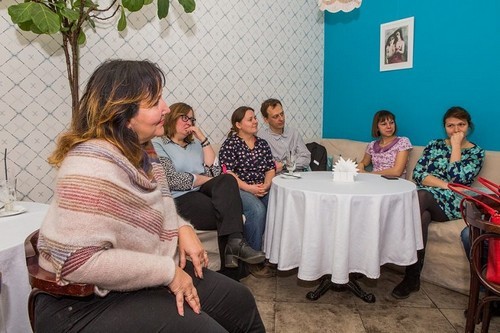
“Therefore, in Russia, unfortunately, articulating the diagnosis all work with the patient and ends. But there is a big problem, as doctors say. Often it makes quite cynically – “your child is terminally ill, but we can help nothing”. But because of how pronounced the diagnosis depends, is the next stage of the beginning of the end or the beginning of a journey,” says Director of the charitable programs of Fund “Maimi”.
Often, our specialists find the family in a depressed state, in a prolonged depression. “They are closed from everyone and everything because they were told that this is the end. It turns out that the whole family – mom, dad, grandparents, brothers or sisters drop out of all processes. I am glad that it is now gradually formed an understanding of what palliative diseases like Duchenne’s myodystrophy, assistance is required not only for the child but for the whole family,” says Helen shepherd.
“My Mio”
The situation with the support of children with Duchenne muscular dystrophy and their families is trying to change Fund “, Mimio”. Today, Fund charges are more than 300 children, and this means that three hundred families life even one iota has changed for the better.
Before in 2015 a Foundation for “My Mio”, each of the organizers had to go your way. Way understandable only to the parent of the child who is diagnosed as “Duchenne’s myodystrophy”.
Helen shepherd says that her son’s Duchenne’s myodystrophy set in 2010. “The script was standard. The first signs I began to notice when the child began to walk. There have been appeals to different specialists, but the final diagnosis was 6.5 years.
But the terrible words which I had read about Duchenne muscular dystrophy on the Internet about the disease at that time nothing was known. I started to look for specialists. In Volgograd (where we lived) did not have them, you had to move to Moscow. The only organization that was familiar with the disease, was the Association of neuromuscular diseases. Through it managed to reach Moscow regional neuro-psychological hospital, where he was engaged in this nosology.
Then I saw a post on the Internet that a certain family Sveshnikovym fathered a boy with Duchenne’s myodystrophy. I wrote to Olga Sveshnikova, ready to help, to share their experiences. So in my family Sveshnikovym – Peter and Olga, we quickly became friends. First organized initiative group, and then Fund”.
Its main task in the Fund referred to is to unite families that have children with a similar diagnosis, and to let them know that they are not alone. The Foundation operates several programs, says Helen shepherd. The first is psychological rehabilitation camp for the week in a boarding house near Kaluga.
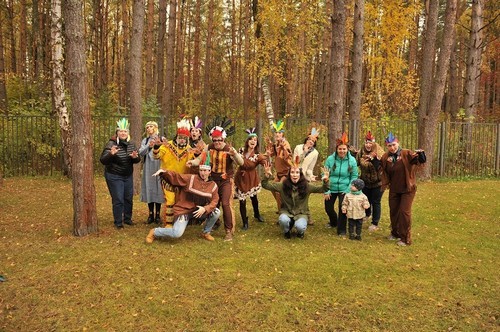
The Fund brings in families from regions, paying for everything from tickets to accommodation in the guest house and Shuttle services. In the camp employs experts who conduct the examination. Also with the families of the psychologists.
The second direction of the medical program, in the framework of which there is Clinic DMD. This two-day examination of the children at West the gold standards of management of patients with Duchenne’s myodystrophy.
“We have a contract with one of the clinics in Moscow, which allows you to use the room and equipment. We bring a team there of doctors and eight families from the regions on the basis of the applications and questionnaires that were trying to select severe cases (for example, family not getting any help at all, there is no way to drive to the Federal center, and so forth). We pay for tickets, hotel, and child undergoes a complete check-up from experts in DMD,” says Marina Kostina.
Not less important direction of the educational program consisting of informational and educational modules. The Fund adapts foreign research materials. Now, for example, is the dissemination of the latest clinical guidelines in medical institutions in Russia.
“Maimi” is also trying to solve the problem of shortage of specialists. For example, a week ago, Orel was an educational module on physical therapy at the children’s hospital.
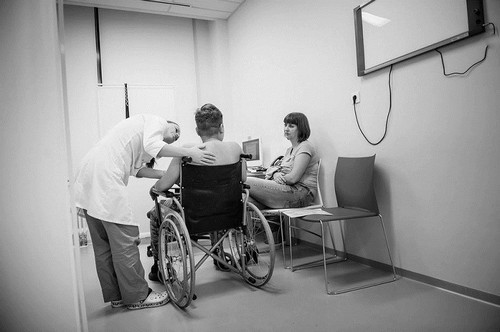
There is a problem – the boys die from the cold. Because of the weakness of cough shock have difficulty with expectoration, says Helen shepherd. For example, the child says that he does not feel breathing problems, parents also do not notice them. We start checking, and it turns out that the boy remained 17% lung capacity. This means that the family had not received help, the child did not receive medical care and support.
“So we want to teach families how to act during pregnancy to prepare professionals for respiratory support. Now in cities large concentration of our wards are trying to find professionals who want to learn it. The Fund is willing to pay for training,” she adds.
Count on your hand
Families who face a diagnosis of Duchenne’s myodystrophy, now forced to fight on their own. Help you can count on from the state – the individual program of rehabilitation and habilitation (INRA). But for this the child must have a disability. That is not always done simply and quickly.
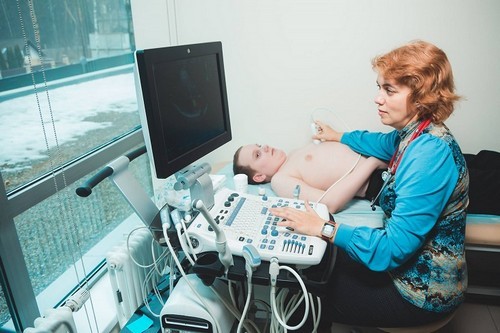
If to speak about the program, in its framework it is possible to get technical AIDS. For example, in Moscow for the most expensive stroller (electric) you can get about 160 thousand rubles, in the regions is 8-15 thousand rubles.
“As for the rest of therapy, all at his own expense. For example, a whole list of medications. In a month they can take up to 12 thousand rubles. It’s a lot of money for the family. When the boy can’t raise a glass, my mom had to quit work and deal only with child care. Often fathers do not stand up and gone and family, – says Elena shepherd – This means that the family will have to live on a disability pension and the attendance allowance for the child.”
Therefore, the money necessary for medicines, for many are unaffordable, not to mention otkalyvalis and devices non-invasive ventilation, which cost hundreds of thousands of rubles. But these devices required the patient with Duchenne’s myodystrophy. In Europe again, no problem with that. Children from the age of 10, while watching, breathing apparatus NIVL or engaged with otkalyvalis.
There are clinical trials of drugs that can drastically affect treatment. But in Russia they are very rare, and to get to them is extremely difficult. The last five years, has not been nothing. Only in February launched a clinical trial of one drug that can help the 13 percent of boys with DMD with nonsense mutation. Although families of such clinical trials light at least some hope.

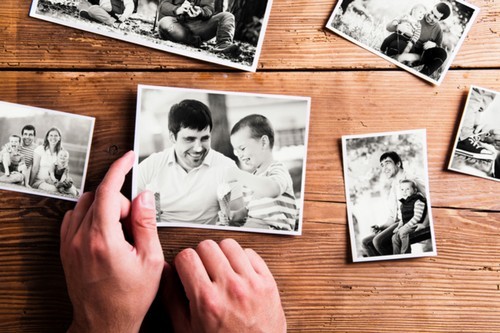
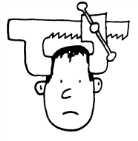
TY for this article, it is incredibly helpful to me! Much simpler than anything else out there.